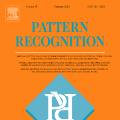Poetry and prose are written artistic expressions that help us to appreciate the reality we live. Each of these styles has its own set of subjective properties, such as rhyme and rhythm, which are easily caught by a human reader's eye and ear. With the recent advances in artificial intelligence, the gap between humans and machines may have decreased, and today we observe algorithms mastering tasks that were once exclusively performed by humans. In this paper, we propose an automated method to distinguish between poetry and prose based solely on aural and rhythmic properties. In other to compare prose and poetry rhythms, we represent the rhymes and phones as temporal sequences and thus we propose a procedure for extracting rhythmic features from these sequences. The classification of the considered texts using the set of features extracted resulted in a best accuracy of 0.78, obtained with a neural network. Interestingly, by using an approach based on complex networks to visualize the similarities between the different texts considered, we found that the patterns of poetry vary much more than prose. Consequently, a much richer and complex set of rhythmic possibilities tends to be found in that modality.
翻译:诗歌和诗歌是写作艺术的表达方式, 帮助我们理解我们所生活的现实。 这些风格都有其自身的主观特性, 比如押韵和节奏, 很容易被人类读者的眼睛和耳朵所捕捉。 随着最近人工智能的进步, 人类和机器之间的差距可能已经缩小, 而今天我们观察算法掌握曾经完全由人类完成的任务。 在本文中, 我们建议一种自动的方法来区分诗歌和诗歌, 仅仅基于音调和节奏性能。 在比较诗歌和诗歌节奏时, 我们把押韵和电话作为时间序列来代表, 因此我们建议一种程序来从这些序列中提取节奏特征。 使用所提取的成套特征对经过深思熟虑的文本进行分类, 得出了通过神经网络获得的0.78的最佳精确度。 有趣的是, 通过使用基于复杂网络的方法来将所考虑的不同文本之间的相似性进行视觉化, 我们发现诗歌的形态比音调调的形态要大得多。 因此, 在这种方式中往往会找到一套更加丰富和复杂的节奏的可能性。




